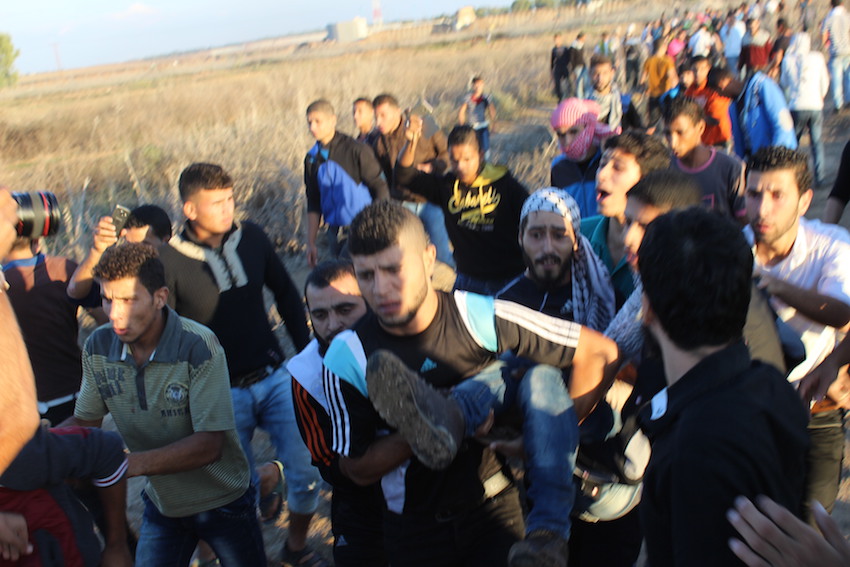Tag: Buffer Zone
-
Another bloody Friday in Gaza
October 8th, 2015 | International Solidarity Movement, Gaza team | Gaza Strip, occupied Palestine Israeli Forces shot and killed a 23 year old on Friday, the 6th of October, in demonstrations east of Khan Younis in the southern part of the Gaza strip. The man was identified by The Ministry of Health in Gaza as Salameh Moussa…
-
Images from Gaza: Another brutal Friday
31st October 2015 | International Solidarity Movement, Gaza team | Gaza Strip, occupied Palestine Images from clashes yesterday, October 30th in Nahel Oz (Shijaia), Occupied Gaza Strip. All photos credited to ISM, Gaza. By the end of clashes yesterday, Minister of Health Dr. Qadra announced 46 people had been injured, including paramedics. Israeli forces met…
-
65 Injured in Friday clashes in Gaza
23rd October 2015 | International Solidarity Movement, Gaza team | Gaza Strip, occupied Palestine Images from clashes today in Nahel Oz (Shijaia), Occupied Gaza strip. More than 20 Palestinians were injured in the Gaza strip today from a combination of live ammunition and teargas inhalation. Journalists and paramedics were targeted during the clashes, at least…



